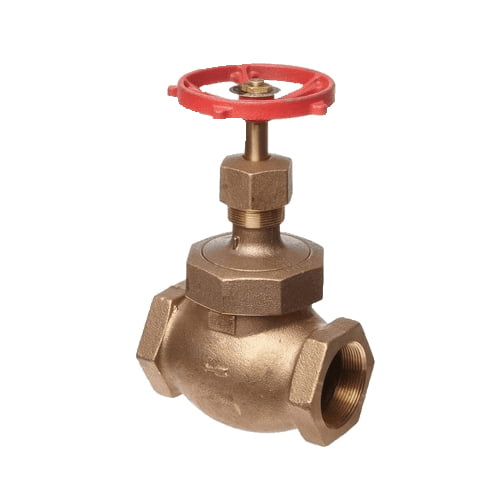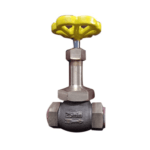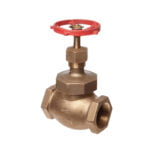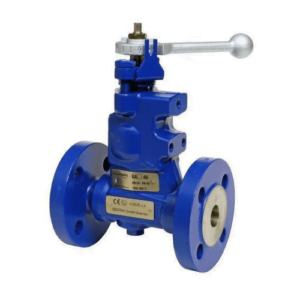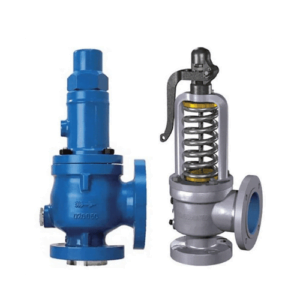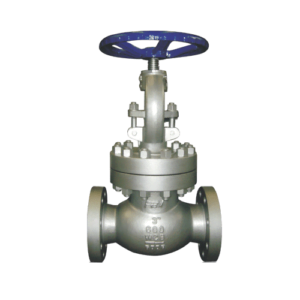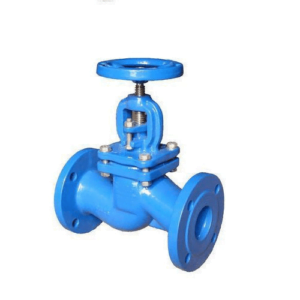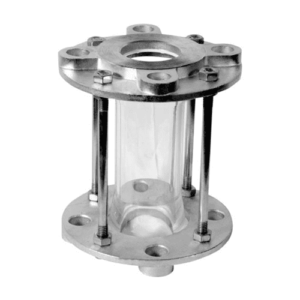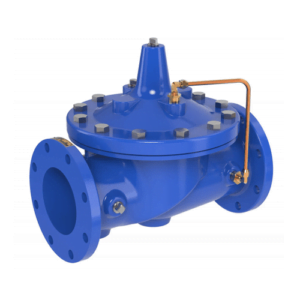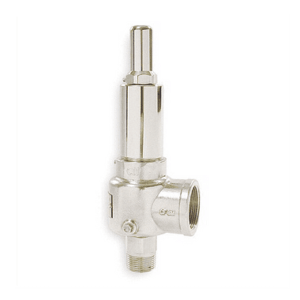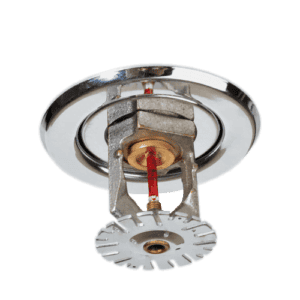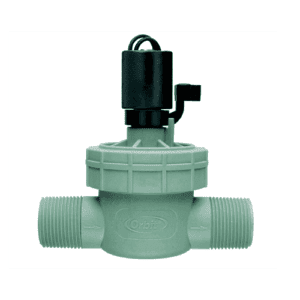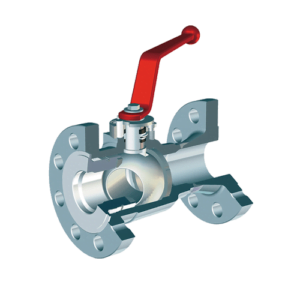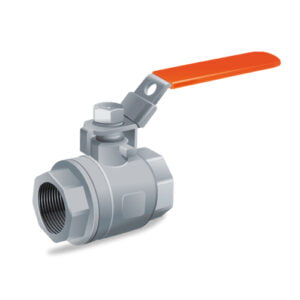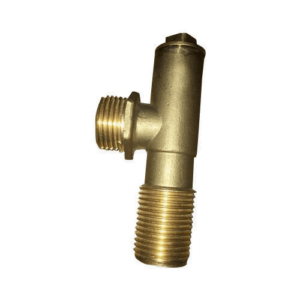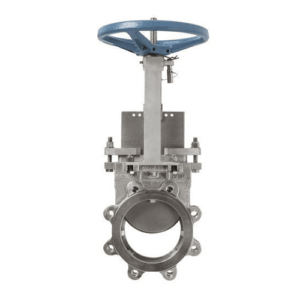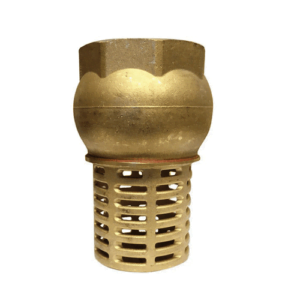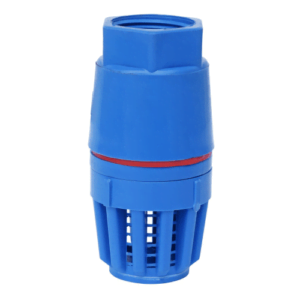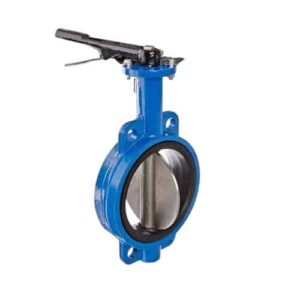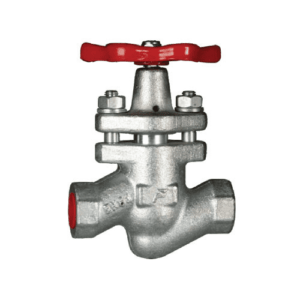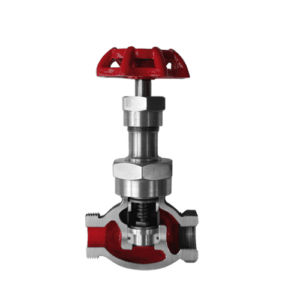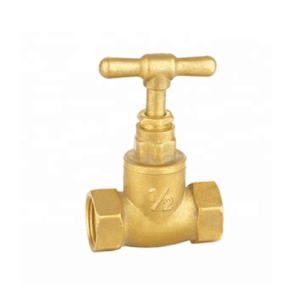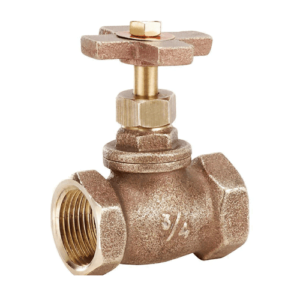| Operator: | Hand wheel operated |
| Body (MOC): | Bronze (Gun Metal) |
| End Connection: | Screwed End / Flanged End |
Bonnet Wheel Valve
Bonnet Wheel Valve: The cover for the opening sin the body is the bonnet, and it is the second most important boundary of a pressure valve. Like valve bodies, bonnets are in many designs and models available. A bonnet acts as a cover on the valve body, is cast or forged of the same material as the body. It is commonly connected to the body by a threaded, bolted, or welded joint. During manufacture of the valve, the internal components, such as stem, disk etc., are put into the body and then the bonnet is attached to hold all parts together inside.
Related Products
Blow Down Valve
A blowdown valve is used in boilers and pressure vessels to remove sediment and other impurities that accumulate in the bottom of the system during operation. This type of valve is essential for maintaining the efficiency and safety of the boiler by ensuring that the water quality does not degrade to a level that could cause scaling or corrosion. Blowdown valves are operated manually or automatically at set intervals to release water and accumulated solids, thereby preventing damage and maintaining the performance of the heating system. This process is crucial for prolonging the life of boilers and ensuring their safe operation.
Pressure Reducing Valve
Pressure Reducing Valve: A relief valve or pressure relief valve is a type of safety valve used to control or limit the pressure in a system; pressure might otherwise build up and create a process upset, instrument or equipment failure, or fire.
Globe Valve
Valve: Valves are for starting or stopping flow, regulating or throttling flow, preventing back flow or relieving and regulating pressure in fluid or gaseous handling applications. Common valve types include: Ball, Butterfly, Check, Diaphragm, Gate, Globe, Knife Gate, Parallel Slide, Pinch, Piston, Plug, Sluice, etc.,
Globe valve: A globe valve is a linear motion valve used to stop, start, and regulate the fluid flow. The globe valve disk can be removed entirely from the flow path, or it can completely close the flow path. During opening and closing of globe valve, disc moves perpendicularly to the seat.
Gas Valve
A gas valve is a critical component in managing the flow and pressure of gas in heating systems, appliances, and industrial processes. This type of valve is specifically designed to ensure safe and efficient operation when handling combustible gases such as natural gas or propane. Gas valves are equipped with safety mechanisms that shut off the gas flow automatically if the pilot light goes out or if a leak is detected, preventing potential hazards. They are commonly found in residential furnaces, gas-powered water heaters, and commercial gas stoves, playing a pivotal role in both safety and functionality.
Sight Glass Valve
Sight Glass Valve: A sight glass is a transparent tube through which the operator of a tank or boiler can observe the level of liquid contained within. Simple sight glasses may be just a plastic or glass tube connected to the bottom of the tank at one end and the top of the tank at the other.
Check Valve
Valve: Valves are for starting or stopping flow, regulating or throttling flow, preventing back flow or relieving and regulating pressure in fluid or gaseous handling applications. Common valve types include: Ball, Butterfly, Check, Diaphragm, Gate, Globe, Knife Gate, Parallel Slide, Pinch, Piston, Plug, Sluice, etc.
Check Valve: A check valve, clack valve, non-return valve, reflux valve, retention valve or one-way valve is a valve that normally allows fluid to flow through it in only one direction. Check valves are two-port valves, meaning they have two openings in the body, one for fluid to enter and the other for fluid to leave.
Safety Valve
Valve: Valves are for starting or stopping flow, regulating or throttling flow, preventing back flow or relieving and regulating pressure in fluid or gaseous handling applications. Common valve types include: Ball, Butterfly, Check, Diaphragm, Gate, Globe, Knife Gate, Parallel Slide, Pinch, Piston, Plug, Sluice, etc.
Safety Valve: A safety valve is a valve that acts as a fail-safe. An example of safety valve is a pressure relief valve, which automatically releases a substance from a boiler, pressure vessel, or other system, when the pressure or temperature exceeds preset limits.
Sprinkler
Sprinkler: A sprinkler is a device used to spray water. Sprinklers are used to water plants or grass, or to put out fires in buildings. a device perforated with small holes that is attached to a garden hose or watering can and used to spray plants, lawns, etc.
Ball Valve
A ball valve is a form of quarter-turn valve which uses a hollow, perforated, and pivoting ball to control flow through it. It is open when the ball’s hole is in line with the flow and closed when it is pivoted 90-degrees by the valve handle. Ball valves are durable, performing well after many cycles, and reliable, closing securely even after long periods of disuse. They are commonly used in applications ranging from residential to industrial for their robustness, ease of operation, and versatility in handling various fluids, gases, and slurries.
Ferrule Cock
Ferrule Cock: Ferrule Cocks incorporate a packed gland spindle and have a union outlet for connection to all ferrule bends or adaptors. RMC TPFNR Ferrules are for under pressure tapping. They incorporate a non-return gunmetal jumper valve and a high-density polyethylene tapered closing plug.
Knife Edge Valve
A knife edge valve, more commonly known as a knife gate valve, is designed for on-off and throttling services, handling slurries, viscous, corrosive, and abrasive media. This type of valve features a sharp blade, which helps it cut through thick liquids and sludge with ease, making it highly effective in industries such as wastewater treatment, mining, and paper manufacturing. The knife gate valve’s design allows it to provide a tight seal even when dealing with fluids that contain solids, thereby preventing leaks and ensuring efficient flow control. Its ability to handle high-density fluids and its robust construction make it a preferred choice for challenging industrial applications.
Foot Valve
Valve: Valves are for starting or stopping flow, regulating or throttling flow, preventing back flow or relieving and regulating pressure in fluid or gaseous handling applications. Common valve types include: Ball, Butterfly, Check, Diaphragm, Gate, Globe, Knife Gate, Parallel Slide, Pinch, Piston, Plug, Sluice, etc.
Foot Valve: A foot valve is a type of check valve that is typically installed at a pump or at the bottom of a pipe line (hence the name). Foot valves act like ball check valves, but have an open end with a shield or screen over it to block debris from entering the line.
Butterfly Valve
Butterfly valves are very similar to ball valves they also work on the phenomenon of quarter-turn rotational movement which means by moving 90 degrees it could be either turned on to fully operated or turned off to restrict the flow of fluid. This is used to transfer, regulate or stop the movement of a fluid. They are used widely in the industries such as food processing, water supply industries, water pumping, etc. they are used wherein there is a need for a broad range of flow isolation Is required. “They belong from the quarter-turn family” and they usually have large pipe diameter.
Diaphragm Valve
A diaphragm valve is designed to control the flow of a substance through an enclosed space by the flexing of a diaphragm. It is commonly used in applications requiring precise flow regulation and sealing capabilities, particularly where the purity and cleanliness of the flow medium are essential. The valve’s design prevents any fluid from being trapped in the valve itself, making it ideal for use in the pharmaceutical, food and beverage, and biotech industries. This type of valve is also appreciated for its ability to handle corrosive fluids and slurries with relative ease.
Piston Valve
Piston Valve: A piston valve is a device used to control the motion of a fluid along a tube or pipe by means of the linear motion of a piston within a chamber or cylinder. Examples of piston valves are: The valves used in many brass instruments. The valves used in pneumatic cannons.
Sluice Valve
Valve: Valves are for starting or stopping flow, regulating or throttling flow, preventing back flow or relieving and regulating pressure in fluid or gaseous handling applications. Common valve types include: Ball, Butterfly, Check, Diaphragm, Gate, Globe, Knife Gate, Parallel Slide, Pinch, Piston, Plug, Sluice, etc.
Sluice Valve: A gate valve, also known as a sluice valve, is a valve that opens by lifting a barrier out of the path of the fluid. Gate valves require very little space along the pipe axis and hardly restrict the flow of fluid when the gate is fully opened. The gate faces can be parallel but are most commonly wedge-shaped.
Relief Valve
Relief Valve: A relief valve or pressure relief valve is a type of safety valve used to control or limit the pressure in a system; pressure might otherwise build up and create a process upset, instrument or equipment failure, or fire.
Stop Valve
Stop Valve: Stop valve is any sort of valve type that completely stops the flow of liquid flow through a pipe. Stop valves is mainly used in plumbing or industrial applications to shut off the flow of (hot or cold) water to a plumbing fixture, such as an icemaker, toilet, faucet, dishwasher etc.


